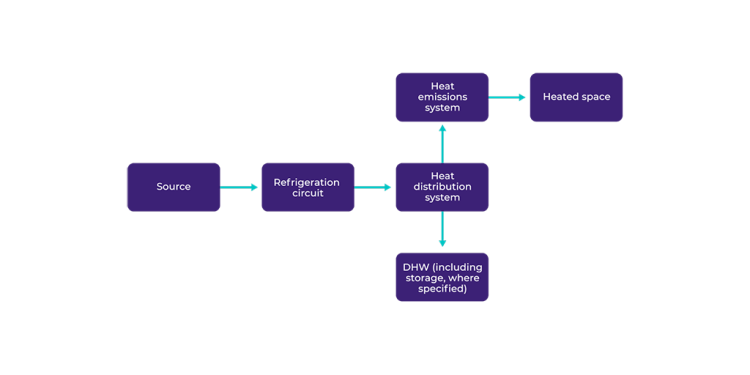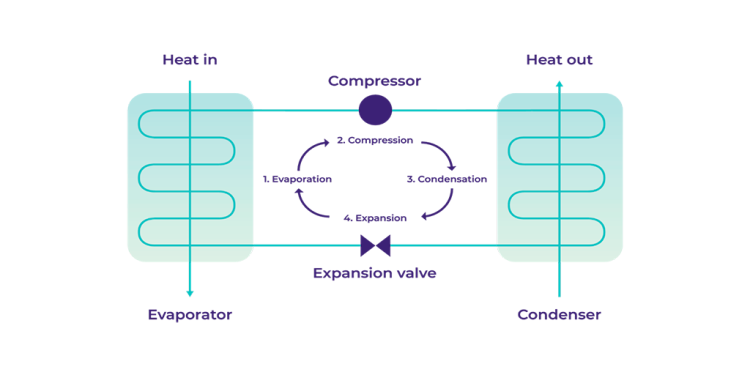What are heat pumps and how do they work?

What are heat pumps?
Heat pumps involve heat transfer and therefore do not utilise combustion nor release carbon dioxide into the atmosphere. Instead, they use a refrigeration circuit to drive the transfer of heat. It is crucial that the conditions in each subsystem and at the heat transfer interface correctly for the chain of heat transfer to work. If one element is out of place, the heat pump may not work, or function inefficiently.

Despite the name heat pumps are not the source of heat but rather the drivers of the heat transfer process. The source system is where the heat is located, the refrigeration circuit is how it is transferred, and the heat sink is where the heat is then delivered to.

There are three types of heat pumps, differentiated by their source:
- Air source heat pumps
- Water source heat pumps
- Ground source heat pumps
The system requires a chain of events for heat to be cascaded through multiple subsystems. For each type of heat pump, these are:
Air source
Air source heat pumps are usually the most straightforward to install and operate. In this instance, the heat exchanger and fan are usually integrated into the heat pump system. Furthermore, they use a large heat exchanger and a fan to extract heat from the air. Air to air pumps involves the refrigerant circuit transferring heat into the air, although it can also be used for cooling.
Water source
Extracts heat from surface water (sea, rivers or lakes) or groundwater (aquifers). They are similar to ground source heat pumps in that they need detailed source system design. In this instance, the quality of the water needs to be taken into consideration for the design of pumping, filtration and heat exchangers. Boreholes are another consideration with water source heat pumps as they can collapse or clog up over time. Therefore, there should be a plan in place to budget for operation and maintenance over time.
Ground source

Heat is transferred from the ground using closed loops. These can be arranged horizontally or vertically in boreholes. They are more complex than air source heat pumps and special design skills are necessary to ensure that the system operates reliably.
Heat pumps in the public sector
Public sector bodies recognise the effectiveness of heat pumps and utilise funding delivered by Salix to install these low carbon technologies. In 2021 air source heat pumps have been installed by Local Authorities such as Cheshire West and Chester Council and Lichfield District Council as well as NHS Trusts, such as Nottingham University Hospital.
This is also true for heritage sites and higher and further education institutions. For instance, The Science and Industry Museum are working to utilise their groundwater through the installation of water source heat pump networks and boreholes. Bedford College has installed a water source heat pump on their Cauldwell Campus which is estimated to reduce the college’s carbon emissions by 95.84 tCO2e per annum.
Starting the Discussion
Our case studies section includes case studies on the effective implementation of Heat Pumps showcasing how funding has brought heat decarbonisation to the forefront of the climate agenda for public sector bodies and supported investment in infrastructure for the future.
A significant part of the battle of introducing low carbon alternatives is showcasing their utility and importance in attaining the Net Zero target. In sharing success stories, both in terms of financial and carbon savings, Salix Finance wish to illustrate the laudability of these technologies and the accessible means by which Public Sector bodies may do so.
26 August 2021
